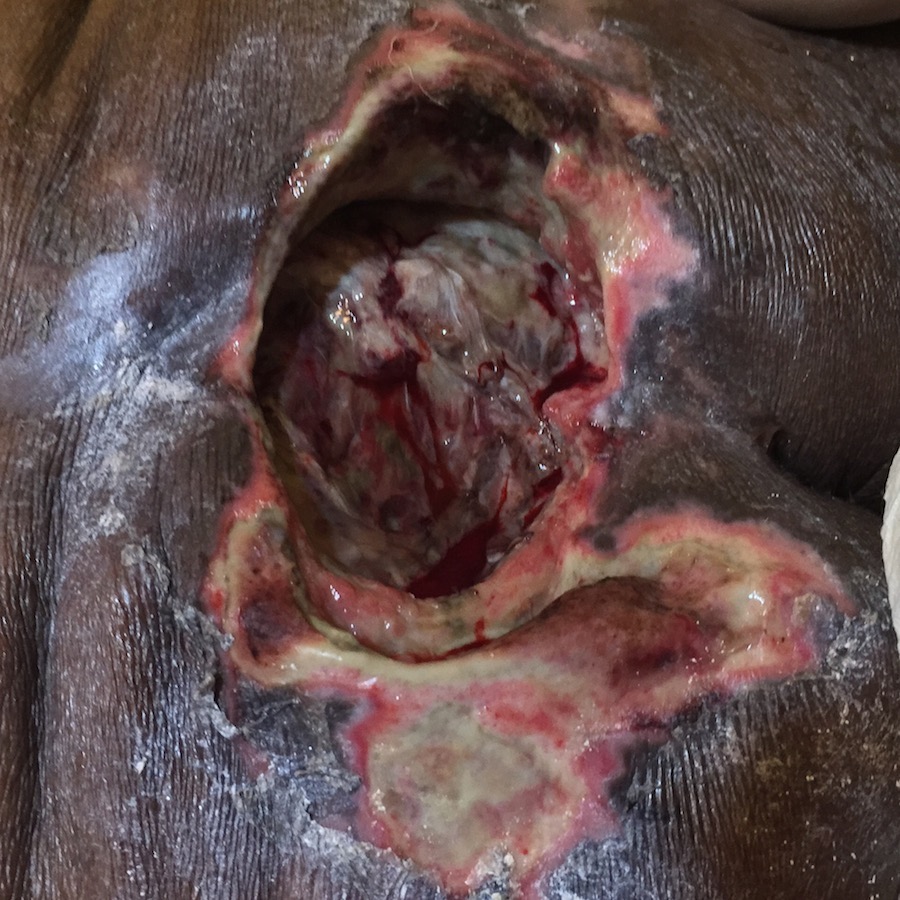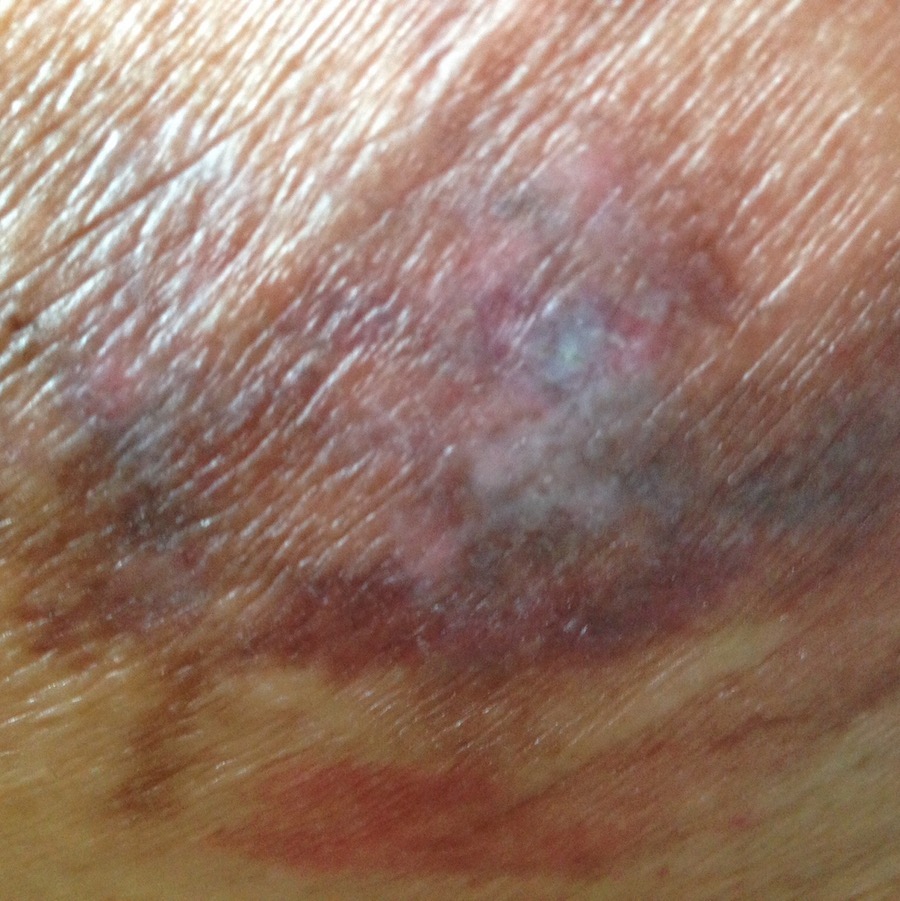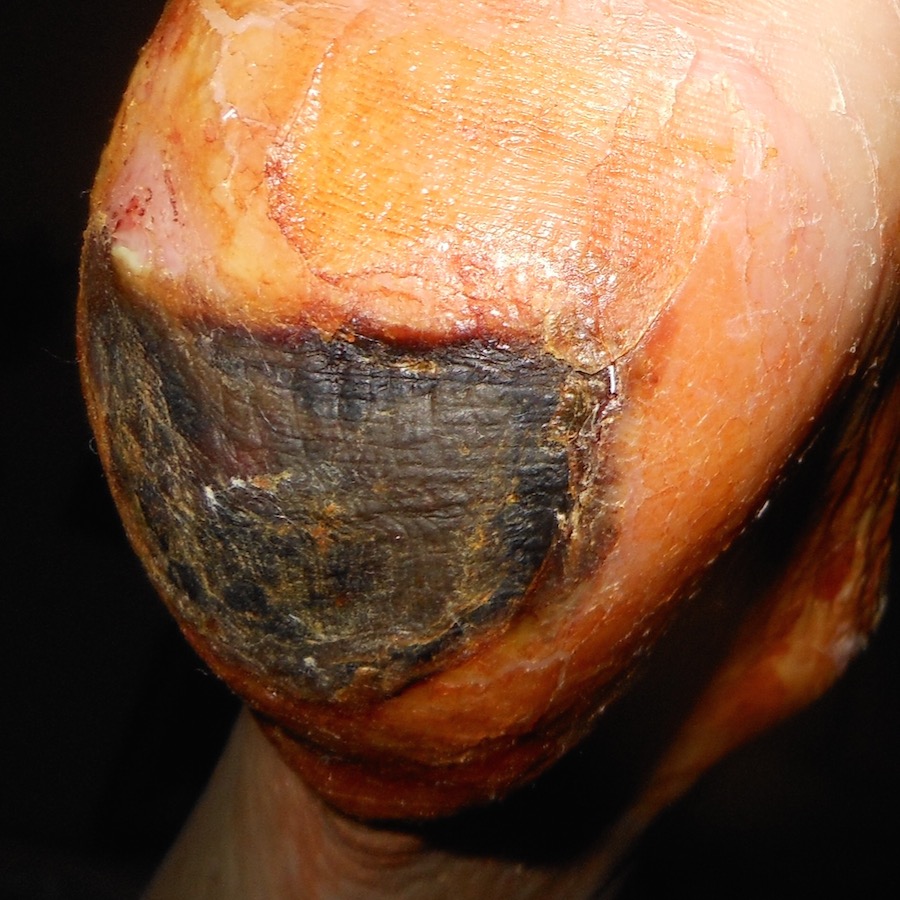Stage 1
Emerge without frank denudation or ulceration of skin that is red and nonblanchable.
Stage 2
- Partial thickness wounds involving the epidermis and dermis
- May also present as fluid-filled blisters

Stage 3
- Shear force or pressure injury wounds.
- Appear as full-thickness skin loss involving damage or necrosis of subcutaneous fat that may VISIBLY extend down to, but not through, underlying fascia.
Stage 4
- True pressure injury wounds.
- They present with full thickness tissue loss; deep tissue layers such as muscle, tendon, ligaments or bone are visible.

Suspected Deep Tissue Injury
- Presents as either a blood-filled blister or ecchymosis.
- Affected areas can feel edematous or boggy and are often warmer and tender compared to adjacent skin.
- Classically located over bony prominences with highest prevalence at the heel and lesser but substantial prevalence at the sacrum and buttocks.

Unstageable Ulcer
Full thickness skin loss but the true depth of the ulcer is obstructed by necrotic tissue in the form of slough or eschar.
